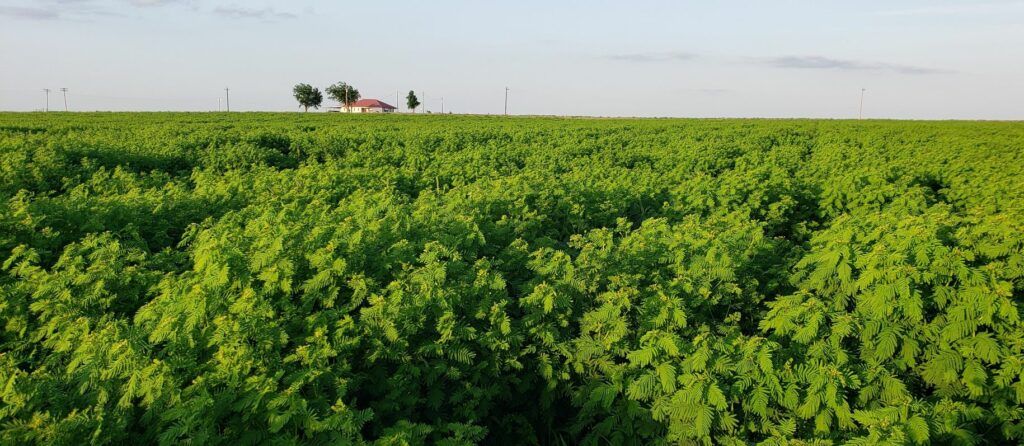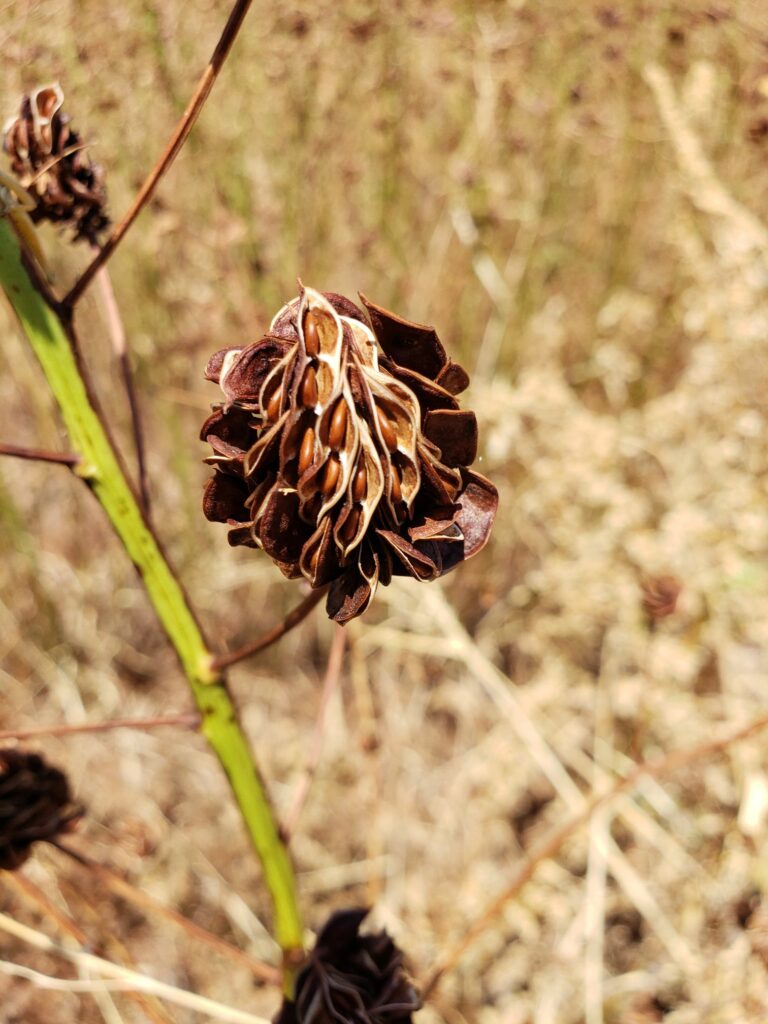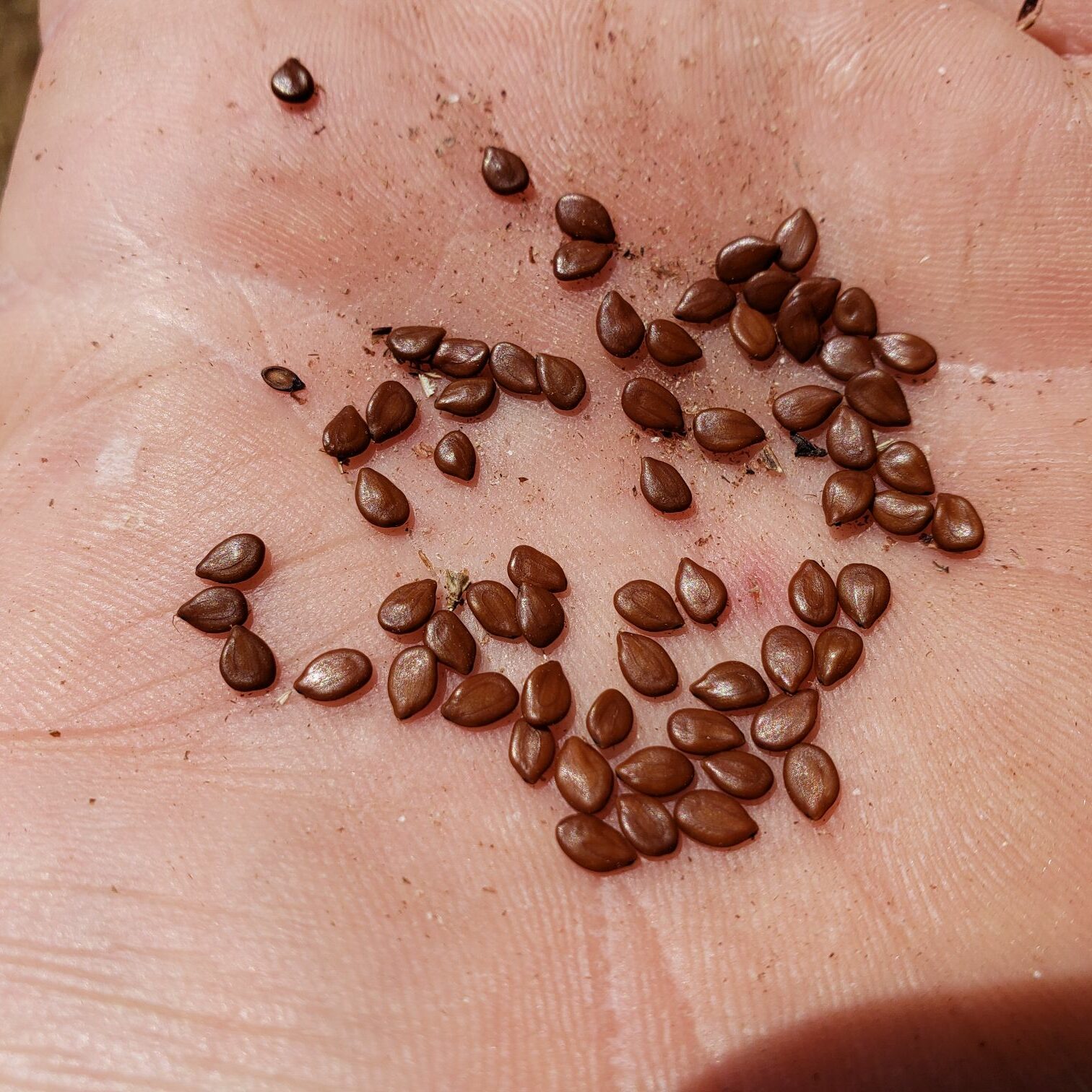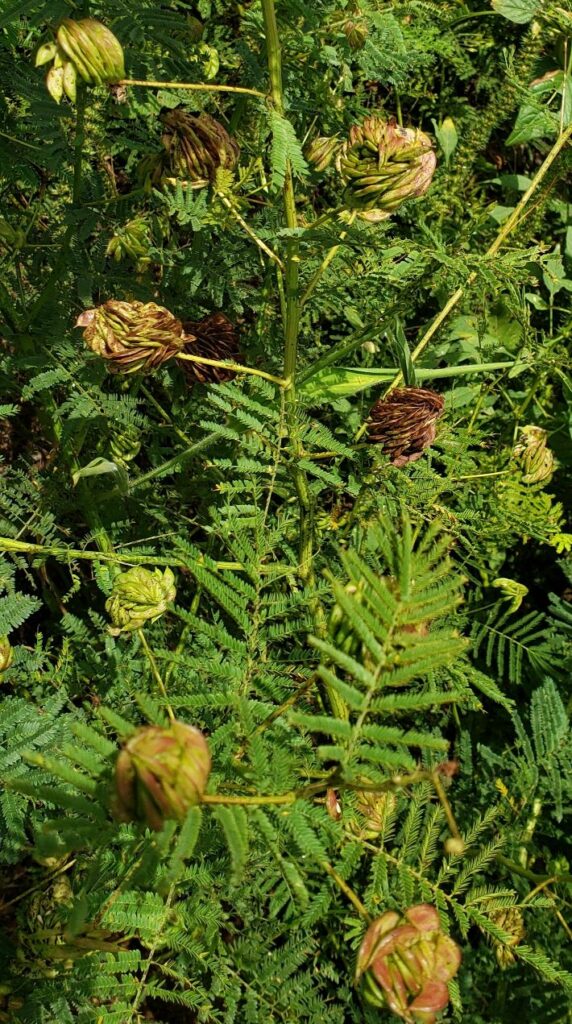Illinois Bundleflower
(Desmanthus Illinois)

Sabine Illinois bundleflower is an upright, branching, perennial, native warm-season legume. Plants occur singularly or in small colonies. Lower stems of the plant are woody. The leaves are feathery, dark-green in appearance. Plants on average will grow approximately 3 to 4 feet in height. The seed pods are curved and arranged in round tight bundles. Flowers are globular, puffy, and white.
Sabine has both good winter hardiness and drought resistance making it adaptable from the Western Great Plains to the East Coast. Sabine will grow on a wide range of soil types, from clays to sandy loams. Sabine will perform best in moist depressions or where plants can receive an occasional overflow of water. Sabine is best suited to areas receiving 15 inches or more annual rainfall.
Sabine Illinois bundleflower is best used as a component in range and pasture seedings, providing a legume for nitrogen assimilation. Sabine is used for wildlife food and cover planting, revegetation plantings on mined land and critical area plantings.
Establish with range seeding mixtures at a rate of 1 – 2 pure live seed (PLS) pounds per acre. Broadcast or drill at 15.0 pounds per acre for pure stands. Seed should be drilled at a depth of 1/4 to 3/4 inch.



General Characteristics
| Plant Type: | Forb/Legume |
| Life Span: | Perennial |
| Growing Season: | Warm Season |
| Native/Introduced: | Native |
| Plant Height: | 3-4 feet |
| Cold Tolerance: | Good |
| Drought Tolerance: | Good |
| Salt Tolerance: | Poor |
| Soil Type: | All Types |
| Minimum Rainfall: | 18 inches |
| Planting Rate: | 12-15 pls# |
| Planting Date: | Feb. - June |
| Seed Type: | Hard |
| Uses: | Grazing, Wildlife Habitat, Erosion Control, Reclamation |
